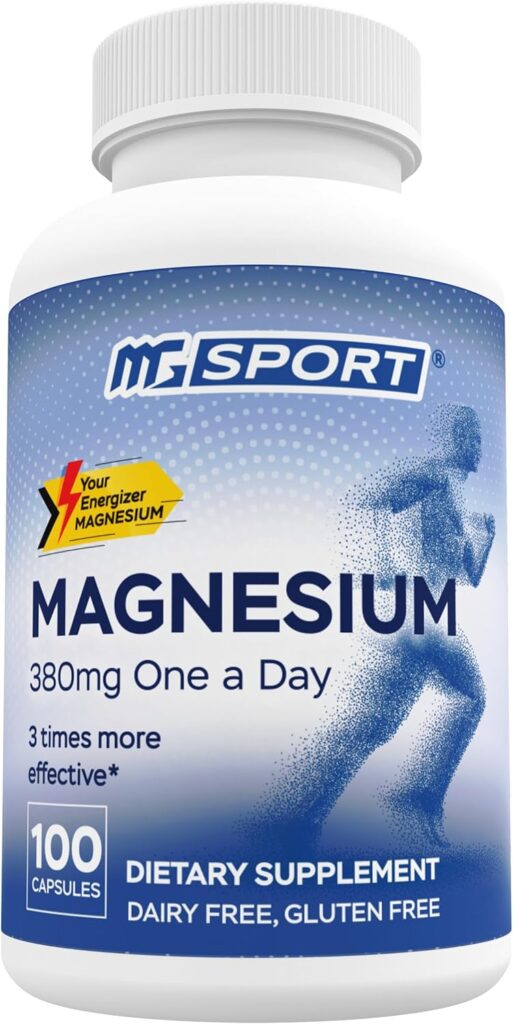Magnesium is an essential mineral that plays a crucial role in numerous bodily functions, including muscle function, energy production, and maintaining a healthy heart.
Unfortunately, many people do not get enough magnesium through their diet, which can lead to a deficiency.
In this post, we are going to explore 5 ways to get more magnesium, starting with the symptoms of low magnesium.
Let’s dive in!
What Are Symptoms of Low Magnesium?
Magnesium deficiency can cause a variety of symptoms that affect your overall health and well-being.
Here are some common signs to look out for:
- Muscle Cramps: Involuntary muscle contractions, especially in the legs and feet, are common signs of low magnesium.
- Fatigue: Feeling unusually tired or low on energy, even after a full night’s sleep, can indicate a magnesium deficiency.
- Irritability and Mood Swings: Low magnesium levels can impact your mood, leading to increased feelings of irritability, anxiety, or even depression.
- Sleep Problems: Difficulty falling asleep or staying asleep may be linked to magnesium deficiency, as it plays a role in regulating sleep cycles.
- Tingling and Numbness: Magnesium helps maintain nerve function, so low levels can cause sensations of tingling, numbness, or “pins and needles.”
- Weak Bones: Magnesium is important for bone health, and a deficiency can contribute to weakened bones and an increased risk of osteoporosis.
- Heart Palpitations: Low magnesium can affect the heart, potentially leading to irregular heartbeats or palpitations.
- High Blood Pressure: Magnesium helps regulate blood pressure, and insufficient levels can lead to higher-than-normal blood pressure levels.
If you experience any of these symptoms, it may be worth discussing with a healthcare provider to determine if magnesium supplementation is necessary.
5 Ways to Get More Magnesium
1. Supplement with Magnesium
One of the easiest and most effective ways to increase your magnesium levels is by taking a magnesium supplement.
Magnesium supplements are available in various forms, such as magnesium oxide, magnesium citrate, and magnesium glycinate.
Taking a daily supplement, especially if you have a known deficiency, can help support magnesium levels and alleviate symptoms such as muscle cramps, fatigue, and poor sleep.
Out of all of the magnesium supplements I’ve used, MGSport’s Magnesium Complex is my personal favorite.
Due to its high absorption formula, it ensures optimal effectiveness in supporting muscle health, supporting cramps, and more.
Enhanced with vitamins B6, D, and E, it improves magnesium absorption, making it easier for your body to utilize this essential mineral.
Clinically tested to offer three times higher intercellular absorption than magnesium citrate, it provides exactly what you need to get more magnesium in your diet.
Simply take one capsule per day, and you’re good to go!
2. Eat Magnesium-Rich Foods
Incorporating magnesium-rich foods into your diet is a natural way to boost your magnesium intake.
Foods that are high in magnesium include leafy greens (such as spinach and kale), nuts (especially almonds and cashews), seeds (pumpkin and sunflower), legumes (beans and lentils), and whole grains (brown rice and quinoa).
Adding these foods to your daily meals can help you meet the recommended daily intake of magnesium.
3. Drink Mineral-Rich Water
Some types of mineral water contain a significant amount of magnesium, which can contribute to your daily intake.
By regularly drinking mineral water that is high in magnesium, you can naturally increase your magnesium levels.
Check the label on your bottled water to see if it contains magnesium and other important minerals, or consider installing a water filter that enhances magnesium content.
4. Use Epsom Salt in Baths
Epsom salt, which is made from magnesium sulfate, is commonly used in baths to promote relaxation and relieve sore muscles.
When absorbed through the skin, magnesium can help boost your levels and provide a calming effect.
Soaking in a warm bath with Epsom salts can also alleviate muscle cramps and improve sleep quality, making it a great way to relax while supporting magnesium intake.
5. Consider Magnesium-Enriched Skincare Products
Some skincare products contain magnesium, such as magnesium oils and lotions, which can be applied directly to the skin.
These products are designed to be absorbed transdermally and may help increase magnesium levels in the body.
While they may not provide as significant a boost as oral supplements or magnesium-rich foods, they can be a useful complementary approach to supporting healthy magnesium levels.
More Magnesium
Magnesium is a vital mineral that supports numerous bodily functions, and ensuring you get enough can help improve your overall health and well-being.
Whether through supplementation, dietary changes, or topical products, there are several ways to increase your magnesium intake.
If you experience symptoms of low magnesium,m such as muscle cramps, fatigue, or sleep disturbances, consider incorporating these strategies into your daily routine.
Always consult with a healthcare provider before starting any new supplementation regimen to ensure it’s the right choice for you.
Thank you for reading!
Affiliate Disclosure
Some of the links on this site are affiliate links. This means that if you click on the link and purchase the item, we may receive an affiliate commission at no extra cost to you. I only recommend products or services that I believe will add value to my readers, however, some (not all) do pay us to be on this blog. Your support and theirs help keep this blog running, and I genuinely appreciate it.
Medical Disclaimer
The information provided on this website is for educational purposes only and is not intended as medical advice. This blog or the writer is not a licensed healthcare professional, and the content should not be used as a substitute for professional medical diagnosis, treatment, or advice. Always consult with your physician or other qualified healthcare provider before starting any new treatment or making any changes to your healthcare routine.
